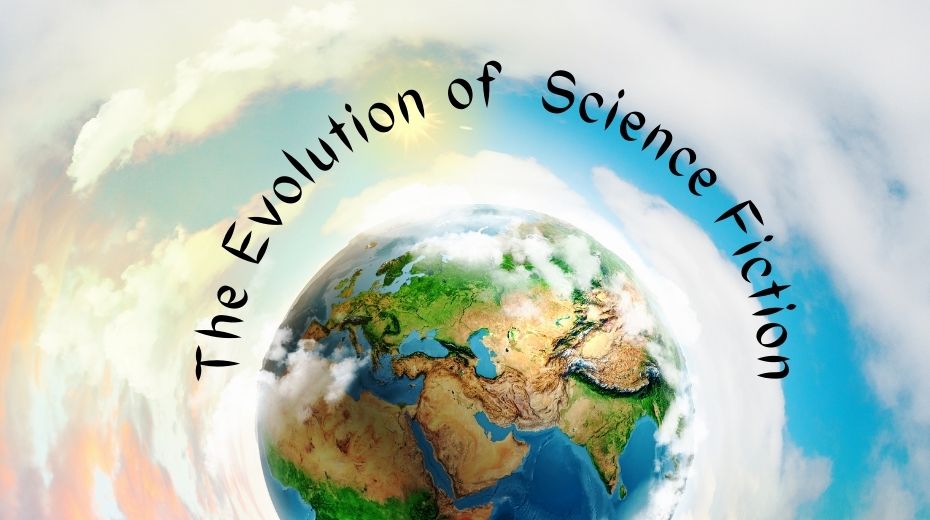Science fiction, often referred to as sci-fi, has undergone a remarkable transformation since its inception. From its early roots in mythology and fantasy to the complex narratives of modern cinema and literature, the evolution of science fiction reflects humanity’s hopes, fears, and aspirations. This blog post will explore the history of sci-fi, tracing its journey through various eras, styles, and cultural influences.
Early Roots: Myth and Fantasy
The history of sci-fi can be traced back to ancient myths and legends. Stories that explored the supernatural and the unknown often incorporated elements that would later become staples of the genre. From the tales of gods and monsters in ancient Greece to the fantastical worlds of Middle Eastern folklore, these narratives laid the groundwork for the imaginative explorations that would characterize science fiction.
One of the earliest examples of speculative fiction is Lucian of Samosata’s “True History” from the 2nd century CE, which depicted a journey to the moon. While not science fiction in the modern sense, it hinted at the possibilities of human imagination extending beyond earthly confines. This early engagement with fantastical elements foreshadowed the genre’s future exploration of space, time, and technology.
The Birth of Modern Science Fiction
The 19th century marked a significant turning point in the evolution of science fiction. The Industrial Revolution brought rapid advancements in technology, fundamentally changing society’s relationship with science and innovation. Authors like Mary Shelley and Jules Verne began to explore the implications of these changes in their work.
Mary Shelley’s “Frankenstein,” published in 1818, is often regarded as one of the first science fiction novels. It explores themes of creation, responsibility, and the consequences of scientific experimentation. Shelley’s cautionary tale set the stage for future sci-fi narratives that would grapple with ethical questions surrounding technology and human progress.
Meanwhile, Jules Verne’s works, such as “Twenty Thousand Leagues Under the Sea” and “Journey to the Center of the Earth,” pushed the boundaries of imagination. He blended scientific knowledge with adventure, captivating readers with visions of underwater exploration and subterranean worlds. Verne’s writing exemplifies how the history of sci-fi is deeply intertwined with humanity’s quest for knowledge.
The Golden Age of Science Fiction
The Golden Age of science fiction, spanning the late 1930s to the early 1950s, saw the genre achieve widespread popularity and cultural significance. This era was marked by the emergence of influential magazines like “Astounding Science Fiction,” which published works by renowned authors such as Isaac Asimov, Arthur C. Clarke, and Robert A. Heinlein.
During this period, sci-fi began to address complex social and political issues. Asimov’s “Foundation” series, for example, explored the rise and fall of civilizations, examining the cyclical nature of history. Clarke’s “2001: A Space Odyssey” challenged perceptions of humanity’s place in the universe, questioning the implications of artificial intelligence and extraterrestrial life.
The evolution of science fiction during the Golden Age also witnessed a shift towards more scientifically grounded narratives. Writers began to emphasize plausible scientific theories and technologies, reflecting a growing public interest in space exploration and atomic energy. This transition laid the foundation for the hard sci-fi genre, which focused on scientific accuracy and technical detail.
The New Wave and Beyond
The 1960s and 1970s ushered in the New Wave movement, characterized by experimental styles and a focus on psychology and social commentary. Authors like Harlan Ellison and Ursula K. Le Guin pushed the boundaries of traditional sci-fi, exploring themes of identity, gender, and cultural conflict. Le Guin’s “The Left Hand of Darkness” examined gender fluidity in a society where individuals could change their gender at will, challenging readers to rethink societal norms.
As science fiction continued to evolve, it embraced a wider array of voices and perspectives. The genre began to reflect the complexities of contemporary society, addressing issues such as environmental degradation, inequality, and technological dystopias. Writers like Octavia Butler and William Gibson introduced diverse narratives that examined the intersection of race, gender, and technology, expanding the genre’s thematic scope.
The Modern Era: Sci-Fi in the Digital Age
Today, the history of sci-fi has reached new heights with the rise of digital technology and the internet. The genre has expanded into various forms, including film, television, and video games, reaching global audiences. Popular franchises like “Star Wars,” “Star Trek,” and the Marvel Cinematic Universe have become cultural phenomena, shaping public perceptions of science fiction.
Moreover, contemporary authors like N.K. Jemisin and Ted Chiang continue to innovate within the genre, weaving intricate narratives that challenge traditional sci-fi tropes. Jemisin’s “Broken Earth” trilogy, which explores themes of oppression and survival, won critical acclaim and introduced new dimensions to the evolution of science fiction.
Conclusion
The journey of science fiction from ancient myths to contemporary narratives illustrates its profound impact on culture and society. As a genre, sci-fi reflects humanity’s curiosity, fears, and aspirations, serving as a lens through which we explore the unknown. The history of sci-fi is a testament to its ability to evolve alongside societal changes, adapting to new technologies and ideas while challenging us to consider the possibilities and consequences of our own advancements. As we move forward, one thing remains certain: the evolution of science fiction will continue to inspire and provoke thought for generations to come.
